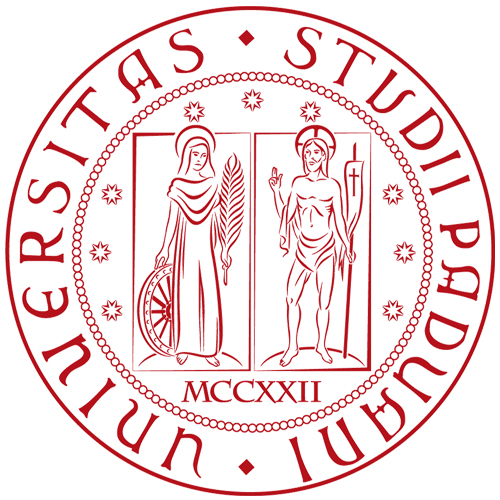Featured
PHRC016 : Dedication to Arsinoe Philadelphos, Paros - Cyclades (270-240 BC) Dedication
37.08579,25.150728This small but relatively thick slab of local stone has delivered one of the three genitive dedications to Arsinoe Philaldephos discovered on Paros. The poor quality of this specimen is revealed by the use of both sides for the same text: the carver probably started writing the dedication on one side but was unsatisfied with his work (perhaps because of a careless spacing between letters), left this side unfinished and wrote the text on the other surface. The stone was probably part of a small altar.
Permanent ID http://s.phrc.it/phrc016
Images
Photo 1: Drawing of the stone...
PHRC015 : Dedication of a nymphaeum to Ptolemy IV and Arsinoe III, Itanos - Crete (220-209 BC) Dedication
35.263304,26.263366The inscription records the dedication of a nymphaeum, together with its reservoir, to King Ptolemy IV and Queen Arsinoe III, by the commander of the Ptolemaic garrison at Itanos, a Roman called Lucius. The dedication was made before 209 BC, when the son of the royal couple, the future Ptolemy V, begins to be mentioned after his parents. The text bears the first explicit attestation of the Ptolemaic garrison at Itanos.
Permanent ID http://s.phrc.it/phrc015
Images:
Photo 1: the stone; Herakleion Museum, Inv. No. 64, copyrighted image. Courtesy of the Greek Ministry of Culture and Sports, Department of Antiquities
Photo 2: view of the southern bay of Itanos (Ptolemaic harbour) from the estern acropolis (S. Caneva, CC-BY-SA 4.0)...
PHRC014 : Dedication to Arsinoe Philadelphos, Nea Paphos - Cyprus (270-240 BC) Dedication
34.757002,32.403648This dedication to Arsinoe Philadelphos is inscribed on a small cylindrical altar, a common support for the cults of the Ptolemies in Cyprus. Among the inscribed dedications to Arsinoe found in the Paphos area, this is the sole specimen having been discovered in the new city, during the excavations of the Roman Orpheus House. The altar bears the same dedication on both sides. The text on the first side has remained unfinished: it was abandoned probably due to a mistake of the carver in the spacing between letters; the same dedication was then fully inscribed on the opposite side of the shaft.
Permanent ID http://s.phrc.it/phrc014
Images:
Photo 1: view of the site of the Orpheus House, Maloutena (S. Caneva, CC-BY-SA 0.4)
Photeo 2: plan of the archaeological...
PHRC013 : Dedication to Arsinoe Philadelphos, Thera - Ciclades (270-240 BC) Dedication
36.363043,25.477900The block, which bears a well carved dedication to Arsinoe Philadelphos, was found in a context of reuse during the excavations at the temple of Apollo Pythios. It probably originally belonged to the nearby sanctuary of the Egyptian deities, which was frequented by members of the Ptolemaic garrison and hosted the ritual activities of the Basilistai. The stone might have been part of a larger structure (possibly an altar), or perhaps was inserted into one of the numerous rock-cut niches of the sanctuary, to indicate the function of an area specifically dedicated to the cult of the deified queen.
Permanent ID http://s.phrc.it/phrc013
Images:
Photo 1: detail of the inscription, from IG XII 3 462
Photo2: view of the sanctuary (S. Caneva, CC-BY-SA 4.0)...
PHRC012 : Oenochoe of King Ptolemy IV, Kourion - Cyprus (221-204 BC) Dedication
34.6662275,32.883723This is the only extant specimen of the Ptolemaic oenochoae from Cyprus and the sole which does not depict the traditional ritual scene including a female figure performing a libation, the agyieus pillar, and an altar with akroteria. The particular features of this jug reasonably point to a local rather than Alexandrian production. Wine-pouring vessels with royal dedications were used in Ptolemaic ruler cults and were often included among the grave goods of their users. This was probably the case for this specimen too.
Permanent ID http://s.phrc.it/phrc012
Images:
Photo 1: photo of the vase, from Burr Thompson 1973, fig. 141
Photo 2: detail of the inscription, from Burr Thompson 1973, p. 171...
PHRC011 : Decree of the city of Itanos honouring King Ptolemy III and Queen Berenike II - Crete (246-243 BC) Decree
35.263460,26.261997The text, elegantly written on a stele of local limestone erected in the sanctuary of Athena Polias, is a decree of the city of Itanos establishing cultic honours for king Ptolemy III and queen Berenike II. The absence of the epiclesis Euergetes suggests a date before 243/2 BC. The king is praised for his euergetic and protective attitude toward the city, in continuity with his ancestors' policy. The cultic honours decreed by Itanos comprise the dedication of a sacred precinct of the royal couple in a park near a city gate and the celebration of a festival for the king's birthday.
Permanent ID http://s.phrc.it/phrc011
Images:
Photo 1: Photo of the stone; Herakleion Museum, Inv. No. 65, copyrighted image. Courtesy of the Greek Ministry of Culture and Sports,...
PHRC010 : Letter of the strategos Thraseas to the city of Arsinoe, with an appended decree of the city of Nagidos - Kilikia (245-221 BC) Letter
36.094185,33.023460This stele contains a letter of the strategos of Kilikia Thraseas to the city of Arsinoe together with a decree of the nearby city of Nagidos concerning a negotiated agreement between the two cities. The dossier is of particular interest as it sheds light on the issues that the foundation of new Ptolemaic colonies – a particularly common practice during the period of the Chremonidean War – could raise in the life of local communities. The stele was erected inside the temenos of Arsinoe, which must also be the place where the inhabitants of this Ptolemaic settlement celebrated their most important public festival, a sacrifice to the Theoi Adelphoi. The text also refers to ritual honours for the living royal couple and can be understood at best against the background of the international...
PHRC009 : Dedication of a statue to Arsinoe Philadelphos Naias, Chytroi - Cyprus (270-240 BC) Dedication
35.255091,33.484472The text accompanies the dedication of a statue to the deified queen Arsinoe Philadelphos, here associated with a local nymph, by an Alexandrian citizen. The statue was probably erected near the temple of Aphrodite Paphia, NW of the acropolis of Chytroi, and in the surroundings of a spring. The connection with water is a common feature of the cult of Arsinoe in Cyprus. The choice of marble, unavailable on the island, and the high quality of the inscription suggest that the donor was a member of the Ptolemaic elite.
Permanent ID http://s.phrc.it/phrc009
Images:
Photo 1: photo of the stone, from Palma di Cesnola 1903, Vol. III, Pl. cxlvi, 5
Photo 2: photo of the stone, from the Metropolitan Museum online...
PHRC008 : Decree of the city of Skepsis for Antigonos Monophthalmos - Troas (311/0 BC) Decree
39.82554,26.688003This fragmentary stele, once erected within the sanctuary of Athena on the acropolis of the city of Skepsis (Kurşunlu Tepe), preserves a decree by which the civic institutions voted the dedication of a sacred enclosure containing an altar and a cult statue to Antigonos Monophthalmos, together with other honours for him, his sons and his messenger Akios. Such initiative was a direct response to the announcement of the peace signed by Antigonos, Cassander, Ptolemy and Lysimachos, bringing the 4th Diadoch War to an end (311/0 BC). Despite being the earliest known inscription mentioning cultic honours decreed by a Greek city for a successor of Alexander, the decree was meant to augment some already existing ritual honours, probably introduced soon after the declaration of the freedom of the...
PHRC007 : Dedication by the official Ptolemaios to Hermes, Herakles, Antiochos III, Soloi - Kilikia (197 BC) Dedication
36.742287,34.539946The inscription, perhaps originally belonging to a statue base of Antiochos III, is a dedication made by the Seleucid governor and high priest of Koile Syria and Kilikia, Ptolemaios son of Thraseas, right after the conquest of Soloi by Antiochos III. The divine recipients, Hermes and Herakles, reveal that the dedication was made in the gymnasium; the king appeared as the third addressee, a point confirming the importance of gymnasia as places where the legitimacy of royal power was shaped and transmitted to the young generations of citizens.
Permanent ID http://s.phrc.it/phrc007
Images:
Photo 1: Photo 1: photo of the stone, from Amandry et al. 1972, p. 110, fig. 11...
PHRC006 : Dedication to Ptolemy II and Arsinoe Philadelphos in Thera - Cyclades (270-246 BC) Dedication
36.362130,25.479532This cylindrical altar, which was found reused in a later house, sheds light on the practice of Ptolemaic ruler cult in Thera at the time of Ptolemy II. The donor probably belonged to the elite of Ptolemaic Thera and the decision to have his name and patronymic carved on the altar suggests that his dedication was not meant for domestic use, as usually argued, but belonged in a public or semi-private context, perhaps the seat of the Basilistai or of another religious association involved in the practice of cultic honours for the Ptolemies.
Permanent ID http://s.phrc.it/phrc006
Images:
Photo 1: squeeze of the stone, from IG XII 3 1387
Photo 2: plan of the "House of Pothitos", with indication of findspot of the altar; from Hiller von Gaertringen 1904, p. 140...
PHRC005 : Dedication to Sarapis, Isis, and the Theoi Adelphoi, Kaunos - Karia (246-220 BC) Dedication
36.827591,28.621287The inscription contains a joint dedication to Sarapis, Isis and the Theoi Adelphoi by an agent whose identity is lost. The object, probably belonging to an altar erected in the local sanctuary of the Egyptian gods, was dedicated after the donor had received a divine order, through an oracle or a dream. The material (marble) may point to the initiative of a wealthy agent, perhaps a member of the Ptolemaic elite. The dedication most probably dates to the reign of Ptolemy III.
Permanent ID http://s.phrc.it/phrc005
Images:
Photo 1: view of the area hosting the sanctuary of the Egyptian gods, from Held - Winkeling-Aumann 2017...
PHRC004 : Dedication of the Basilistai to Sarapis, Isis and Anubis, Thera - Cyclades (280-220 BC) Dedication
36.363043,25.477900This offertory-box (thesauros) was dedicated in the mid-third century to the divine triad Sarapis, Isis and Anubis by a certain Diokles and the association of the Basilistai. The sanctuary has delivered other contemporaneous traces of Ptolemaic ruler cult, confirming the close link which existed between the spread of Egyptian and royal cults in the Aegean areas subjected to the Ptolemaic empire in the third century. The association was probably composed of members of the Ptolemaic garrison.
Permanent ID http://s.phrc.it/phrc004
Images:
Photo 1: drawing of the offertory-box, from Hiller von Gaertringen 1899, p. 260
Photo 2: detail of the inscription, drawing, from IG XII 3 443
Photo 3: the sanctuary of the Egyptian deities, with the niche for the...
PHRC002 : Dedication to Arsinoe Philadelphos, Kaunos - Karia (270-240 BC) Dedication
36.8251,28.623The block was part of a structure dedicated to Arsinoe Philadelphos, probably an altar. The original location is unknown. Two possible options are Aphrodite's sanctuary near the harbour, or the temple of the Egyptian gods, which hosted another dedication to the queen as a member of the ruling couple of the Theoi Adelphoi.
Permanent ID http://s.phrc.it/phrc002
...
PHRC003 : Dossier concerning the cultic honours for Queen Laodike at Sardis - Lydia (Summer 213 BC) Decree
38.488152,28.040690The dossier concerning the establishment and regulation of the cultic honours for Queen Laodike at Sardis was elegantly carved on marble blocks in the monumental vestibule of the temple of the Great Mother, the Metroon. The remaining documentation consists of two royal letters, respectively from Laodike and her husband, King Antiochos III, preceded by the head of the civic decree stipulating the inscription of these texts. The honours decreed for the queen, including the dedication of a sacred precinct, called Laodikeion, with an altar, and the celebration of an annual festival Laodikeia (probably on the occasion of the queen’s birthday), were part of the diplomatic attempt of the Sardians to negotiate with Antiochos the recovery of their city after the dramatic end of the rebellion of...
How to cite a PHRC item (en)
PadovaYou can cite a PHRC item in one of the following way:
Short citation: PHRC+number
You find this code at the top left on the item page
e.g. PHRC001
Permanent ID:
You find the url underneath the short description of the item
e.g. http://s.phrc.it/phrc001
Extended citation:
This form of citation follows this structure:
[Author], “PHRC[number]: [title]”, in S. Caneva (ed.), The Practicalities of Hellenistic Ruler Cults, consulted on [date]
e.g.
S. Caneva, “PHRC001: Dedication to King Ptolemy IV and Queen Arsinoe III, Sarapis and Isis, Ephesos”, in S. Caneva (ed.), The Practicalities of Hellenistic Ruler Cults, consulted on 15/12/2020.
...
PHRC001 : Dedication to King Ptolemy IV and Queen Arsinoe III, Sarapis and Isis, Ephesos - Ionia (217-209 BC) Dedication
37.939168,27.346896The inscription belongs to a marble cylindrical altar dedicated to King Ptolemy IV, Queen Arsinoe III, Sarapis and Isis by the Ptolemaic garrison, which occupied the acropolis at Ephesos. The altar was probably part of a sanctuary of the Egyptian gods established by the garrison. The strong link between the royal and the divine couple is consistent with the documentation about Ptolemy IV after his victory against Antiochos III at Raphia (217 BC). The fragments of the altar were subsequently reused in a house of the Roman period (Hanghaus 2), located N of the acropolis.
Permanent ID http://s.phrc.it/phrc001
Images:
Photos 1-2: squeezes of the two fragments, from Bricault 2014, fig. 1-2
Photo 3: plan of ancient Ephesos
...
PHRC's first birthday! Launch of PHRC 0.2 and new release of texts
Université de Liège
Dear PHRC readers,
We are happy to celebrate the first year of the PHRC website by reaching 50 published texts and by announcing some improvements we have brought to the platform, which enters now its PHRC 0.2 phase, as well as some novelties for the new year!
1) Digital development: Introducing PHRC 0.2
The new version of PHRC is ready to welcome German translations of texts in addition to the existing English, Italian, and French translations.
Moreover, from January 2020 PHRC 0.2 will provide a stable URL to all published texts, making searchability, reference and reuse much easier and more efficient.
Finally, in 2020 a phrc_bot for Telegram will be launched, allowing for a faster search of texts via your smartphone and making it...
Reflections on a new article on the link between divine names and cult places
University of LiègeDear PHRC readers,
We would like to draw your attention to a review paper recently published by the research team of the ERC project Mapping Ancient Polytheisms (based in Toulouse) on the Mediterranean Historical Review:
Mapping ancient gods: naming and embodiment beyond “anthropomorphism”. A survey of the field in echo to the books of M.S. Smith and R. Parker
Beyond the general focus of the discussion, readers of this interesting paper will find useful insights in various questions concerning the link between traditional gods and new human recipients of cult in the Hellenistic period. I mention here a few:
- what is the link between royal epithets associating a ruler with a god and the organisation of (possibly) shared cult spaces for them...
New release of texts (nos. 17-42)
Université de LiègeDear PHRC readers,
We are happy to launch today the second set of texts (nos. 17-42) of the PHRC collection.
The new documents concern Ptolemaic and Attalid ruler cults in Asia Minor, the Aegan Islands, and Cyprus.
With this new release we are adding a new type of text (no. 36, a fragment of a Delian inventory) and a new material (andesite, used for various Attalid altars in Pergamon).
New sovereigns (Ptolemy V, Attalos I, Eumenes II) are concerned as well as new locations (Herakleia near Latmos, Pergamon and its neighbouring sanctuary of Mamurt Kale, Amorgos, Delos, Soloi in Cyprus). Nos. 30-35 combine with the previously released no. 14 to complete the dossier of dedications to Arsinoe Philadelphos from the Paphos area, the biggest from the...




